Did they tell us everything about the TT pistol?
I thoroughly studied the work of Fedor Vasilyevich Tokarev after the third year of the weapons and machine-gun department of the Tula Mechanical Institute. Thanks to the recommendation of the Deputy Dean of the Faculty of Markov, my dormitory roommate Vladimir Zharikov and I had the opportunity to earn some extra money at the Tula factory No. XXUMX. In the factory museum we had to clean out all the samples of small arms and aviation machine-gun weapons that were stored there. My share was a collection of almost all (including experienced ones) Tokarevian self-loading rifles and pistols.
Tidying up these samples, I could not help but notice that the former Cossack Aesoul was an excellent craftsman and a very inventive designer.
These qualities of Tokarev are confirmed, in particular, by the fact that at the end of his career, working in the Moscow Design Bureau of Aviation and Missile Weapons, A.E. Nudelman, where Fyodor Vasilievich was given the opportunity to continue his weapons work, he preferred to improve the panoramic camera he invented FT-2. The movable lens of this camera made it possible to take pictures on an 35-mm film not 36 mm wide, as usual, but 130 mm!
But back to the TT pistol. The main question that arises about this weapon: “What did Fedor Vasilyevich do in this sample himself, and what did he borrow?”. The eligibility of such a statement becomes apparent after meeting John M. Browning’s 9-mm pistols of the 1903 sample. Moreover, the conclusion suggests itself that the TT is in its pure form a copy of one of the Browning models.
The John Moises Browning pistols were developed on the basis of his own 1897 patent. The following samples of Browning pistols are considered to be the most typical: 1900 sample gun of 7,65 caliber mm, 1903 gun of 9 sample gun and 1906 caliber mm gun.
The latter sample does not apply to military-type weapons because of its small caliber. For each of these pistols, a cartridge was simultaneously developed. At one time, the classification of these models and the corresponding cartridges according to numbers from one to three was popular. The first number was the cartridge and pistol caliber 6,35 mm, the second caliber 7,65 mm and the third caliber 9 mm.
In large quantities, Browning pistols were made in Belgium at the factory “Fabrique Nationale d.Armes de Guerre SA” Herstal-Liege. Products directly produced in Belgium are distinguished by the stylized abbreviation “FN” on both plastic cheeks of the handle.
Pistols were in service with the army and police in many countries.
The 9-mm Browning pistol model of the 1903 model was actively used in Russia - it was armed with gendarmerie officers.
The 9-mm Browning feature of the 1903 model is characterized by inertial locking of the barrel bore, although its cartridge does not significantly inferior to the 9-mm cartridge of the Parabellum pistol of the 1908 model using a ballistic pulse 1,5 mm less than the Parabellum cartridge (28 mm) against 29,5 mm), but the sleeve is longer by 1,3 mm (20,3 mm against 19 mm). According to the practice now ingrained in us, this cartridge is designated 9x20.
The gun has a smooth external shape and a closed arrangement of the trigger, which makes it comfortable for pocket wear. The trigger is placed inside the back of the frame and rotates on an axis, which serves as the pin of the safety lever. Plate spring is placed in the back wall of the handle and consists of two branches. The long branch acts on the trigger through the roller, which is mounted on the protrusion of the trigger, and the short branch rests against the jumper of the trigger thrust. Drummer with a spring located in the drilling of the housing-bolt. In the gate, the firing pin is held by a transverse pin.
A block with two feathers is installed on the same axis with the trigger, which guides the sleeve that is extracted from the chamber. The left feather has a tooth that serves as a reflector. The next cartridge rests against the protrusions of both feathers from below. In the block there is a through hole for the passage of the disconnector. Exactly the same feathers and a similar arrangement of the reflector and uncoupler we see on the removable assembly of the trigger hammer trigger mechanism of the TT pistol.
The trigger mechanism with the uncoupler allows only single fire. The descent is made at the same time with the trigger, traction covers on both sides of the store and moves in the slot inside the frame of the gun.
The rear jumper link acts on the sear, and in the same section above the counter there is an uncoupler lowering the thrust and disengaging it from the sear when the valve is rolled back.
Protection against unauthorized firing is carried out by a safety lever and an automatic safety device, which frees the sear when the pistol grip is pressed with the palm of your hand. A safety device against a premature shot is an uncoupler, which does not allow the release trigger to act on the sear until the bolt arrives at the extreme forward position. Flap fuse can be turned on by turning its notched head up only when the hammer is cocked. When the trigger is pulled, the fuse cannot be turned, which serves as a signal for the trigger pulled.
With the help of the safety lever, the pistol is incompletely disassembled, for which it is necessary to delay the casing-shutter so that the fuse tooth goes into the notch on the left side of the casing of the shutter. After that, the barrel can be rotated 120 degrees and remove the shutter-casing with the barrel from the frame by sliding them forward.
Shop box-type capacity for seven rounds with a single row of their location. Relatively small, according to modern views, the number of cartridges in the store is explained by the desire for a compact height weapon. The magazine is located inside the handle and is locked with a snap from the bottom of the magazine. By using up the last cartridge, the magazine feeder raises a tooth located on the right side of the shutter stop frame. The tooth, entering the cut-out of the housing cover, stops it in the extreme rear position.
The sight is constant, consists of a pillar and front sight. They are located on the cover-shutter.
This pistol layout, characterized by a massive shutter casing covering the barrel along its entire length, and with a return spring under the barrel, above the barrel or around the barrel, are protected by a patent from 1897 in the name of John Moises Browning. The location of the removable store in the grip Browning borrowed from Hugo Borchardt. Since then, a similar scheme has been used by many designers.
When comparing "Browning" 1903 with a TT, the first thing that catches the eye is their external similarity, but there are quite a few differences inside these samples - completely different locking mechanisms, significantly different shock trigger mechanisms (in Browning, the trigger is closed, in the TT, the trigger is open and removable). It would seem that in such a situation, there is no need to talk about blind copying by Browning’s Tokarev pistol. But for such assumptions, there is still reason!
I was able to find a very unusual version of 1903 Browning in the weapons collection of the technical office of the Tula TsKIB SOO, which differs from the classic one with the trigger. Call it conditionally "Browning arr. 1903 K
"Browning arr. 1903 G.K. can be considered an extremely rare specimen, since it is not described in either domestic or foreign literature. In the weapons collection of the technical office of the Tula TsKIB SOO, where it is listed under the name "Browning" 1903. "In appearance, overall and weight data, this gun is completely similar to the above-described pattern chambered for 9XXNNXX mm, but differs from it in the device of the trigger mechanism , lack of automatic fuse and flag safety mechanism.
There are no factory stamps and inscriptions on the casing-shutter and the frame of the pistol. Branding is available only on the breech breech in the area of the outlet window.
The sample belongs to the class of weapons with inertial locking of the barrel. Its barrel, return mechanism and seven-cartridge replaceable magazine are interchangeable with the above-described Browning pistol of the 1903 sample.
For an incomplete disassembly of this sample, it is necessary, by retracting the housing-bolt and, trying to turn the barrel, to the touch, find the position when the barrel protrusions come out of engagement with the frame of the pistol and enter the cut-out of the housing-bolt.
The trigger mechanism of the pistol is a separate unit in the form of a pad, in which the trigger with its battle spring inside is collected, the sear with the leaf spring and the disconnector. After separation of the housing-bolt this unit is separated from the frame of the gun.
Externally, the unit and its parts are indistinguishable from similar TT pistols.
In the Tula city museum of weapons there is an experienced pistol made by F.V. Tokarev, which can be considered a prototype of the TT and which differs from the Browning pistol only in that it uses the 7,62-mm Mauser cartridge.
Thus, it is quite possible to say that it was originally supposed to completely copy the TT with a rare modification of the Browning pistol with a removable trigger mechanism.
The Mauser patron was chosen by Tokarev only because at the end of 1920 by the decision of the Artcom Committee of the Red Army Artillery Directorate from the German company DWM (with 1922 Berliner Karlsruhe Industriewerke - BKIW) bought the license for its production. However, this munition was too powerful for the implementation of inertial locking. To rectify the situation, Fyodor Vasilyevich in the next version of the TT applied the barrel bore locking in the image and likeness of the Colt pistol of the 1911 sample - a swinging barrel controlled by an earring. Note that the Colt model 1911 was developed by the same Browning at the Colt plants.
This begs the question, why did Tokarev, a very inventive designer, go to an obvious copy when developing such a simple weapon as a self-loading pistol? All in the same Tula museum of weapons are his original samples of self-loading rifles structurally much more complex than the TT. So, for example, its self-loading rifle SVT-1938 adopted in service in the 38 was completely original in design. The same can be said about the Tokarev pistol sample 1938 g.
| The main characteristics of the gun "Browning" rev.1903 g. " | |
| Caliber, mm | 9 |
| Gun weight with magazine without cartridges, kg | 0,93 |
| Initial speed of a bullet, m / s | 330 |
| Barrel length, mm | 128 |
| The length of the gun, mm | 205 |
| Height of the gun, mm | 120 |
| Weight of one cartridge, g | 11,3 |
| The main characteristics of the gun "Browning" arr. 1903 K | |
| Caliber, mm | 9 |
| Gun weight with magazine without cartridges, kg | 0,93 |
| Initial speed of a bullet, m / s | 330 |
| Barrel length, mm | 128 |
| The length of the gun, mm | 205 |
| Height of the gun, mm | 120 |
| Weight of one cartridge, g | 11,3 |
| The main characteristics of the pistol TT | |
| Caliber, mm | 7,62 |
| Gun weight with magazine without cartridges, kg | 0,825 |
| Initial speed of a bullet, m / s | 420 |
| Barrel length, mm | 116 |
| The length of the gun, mm | 195 |
| Height of the gun, mm | 120 |
| Weight of one cartridge, g | 11,9 |
The answer here can be only one. The designer was simply ordered to copy a specific pattern. Apparently, someone in the Soviet military tops dealt with Browning 1903 and considered it an ideal pistol, which, due to its uncomplicated design, could easily be manufactured at our not very advanced weapons factories at that time. In fact, the task of Tokarev was not the creation of an original domestic pistol, but the re-establishment of the Browning under the patron of the domestic production of 7,62x25. The basis was taken not the most common model of a pistol, but its most simple, albeit rare modification with a removable trigger mechanism. But the powerful ammunition still forced the designer to change the locking system in the gun.
Such an option to create a TT is quite likely, since in Soviet weapon history there are often cases when military and political leaders forced designers to make technical decisions dictated by their own preferences.
For example, on the same TT, Semen Mikhailovich Budyonny strongly did not recommend Tokarev to use an automatic safety device that blocks the trigger mechanism if the gun is released from the hand. And yet I got my way - there is no automatic fuse on the TT!
Designer Sergey Gavrilovich Simonov told me that Kliment Efremovich Voroshilov insisted on replacing the SKS with his carbine with a simple and technological folding faceted bayonet, oxidized in black, also folding, but bladed and shiny. Supposedly, infantry attacking with bayonets shining in the sun will terrify the enemy. Sergey Gavrilovich spat, but together with the technician of his design bureau Volkhny Vasily Kuzmich, they bungled such a bayonet.
The discovery by the author of the article, gunsmith Dmitry Shiryaev, of a new, nowhere described modification of the Browning pistol of 1903 can be considered a small sensation. Moreover, the presence of a "Browning" with a removable trigger trigger in the technical room of TsKIB is confirmed by the employees working there. However, there is reason to believe that its origin is not as obvious as it seems to the author of the article, which means that the issue of copying this sample by Tokarev is not so unambiguous. Therefore, the editors of the magazine turned to gunsmiths and weapons historians with a request to express their opinion in the next issues of our publication on the origin of the mysterious sample and the possibility of copying it by Tokarev during the development of the TT pistol.
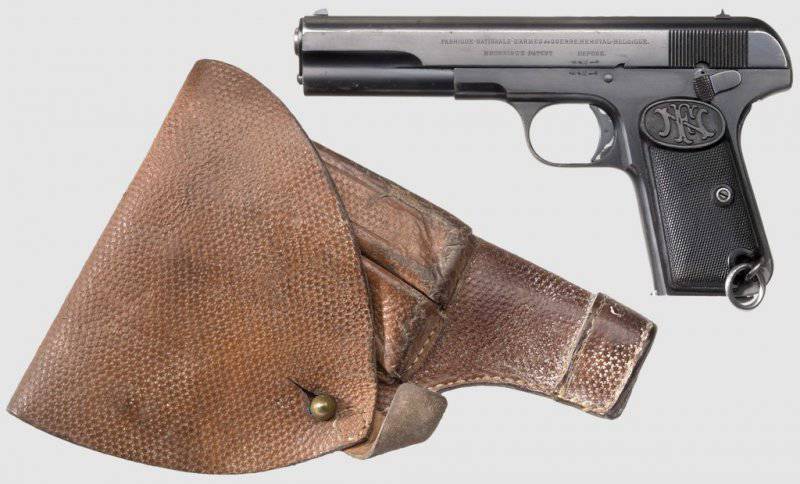
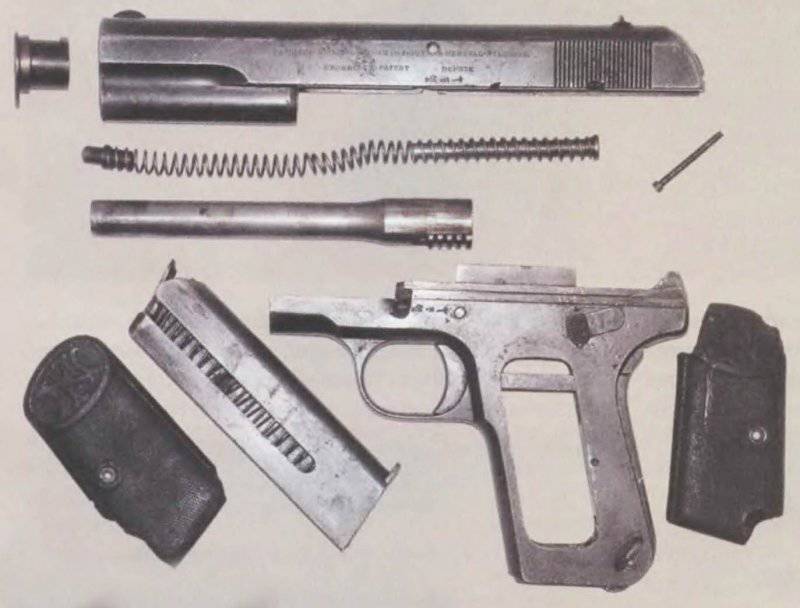
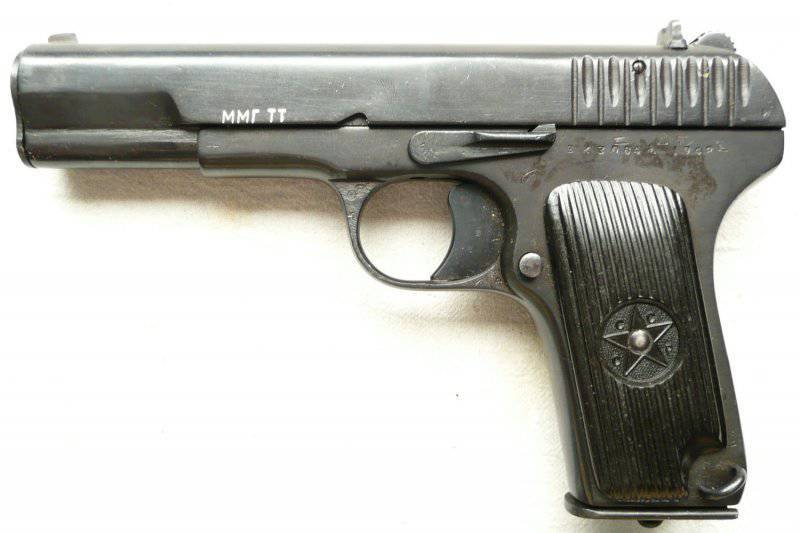
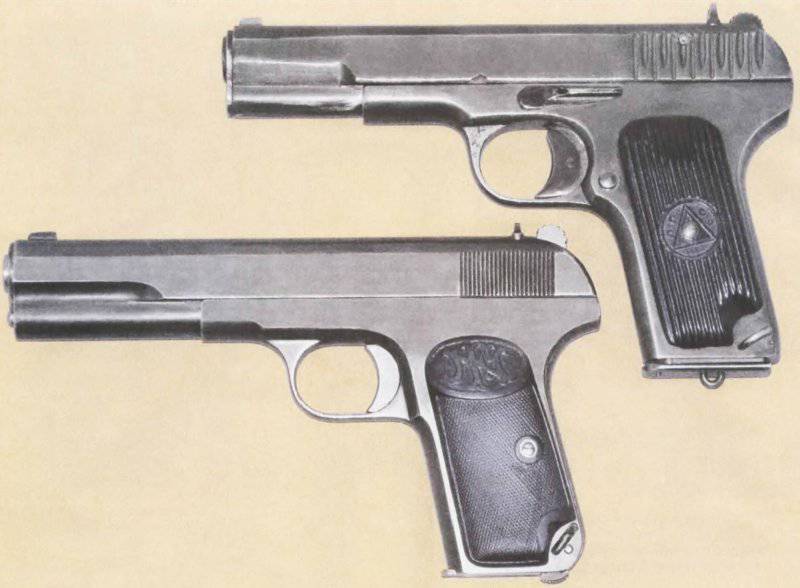
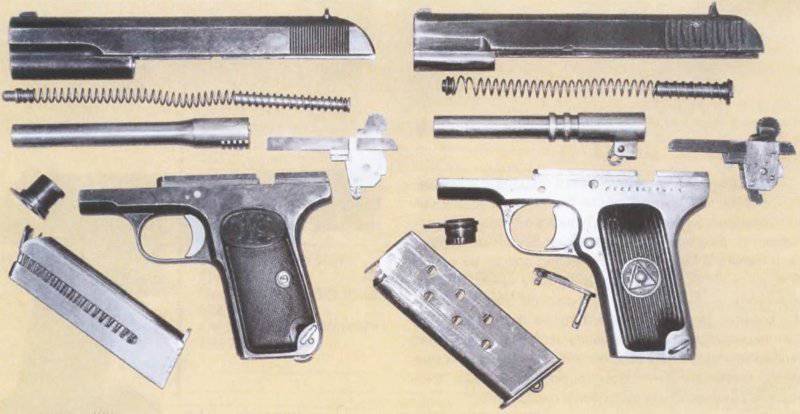
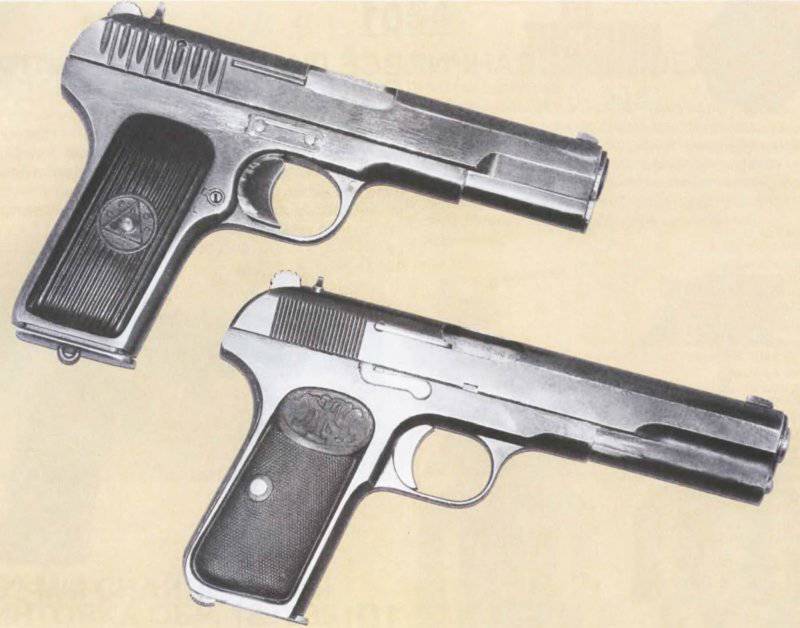
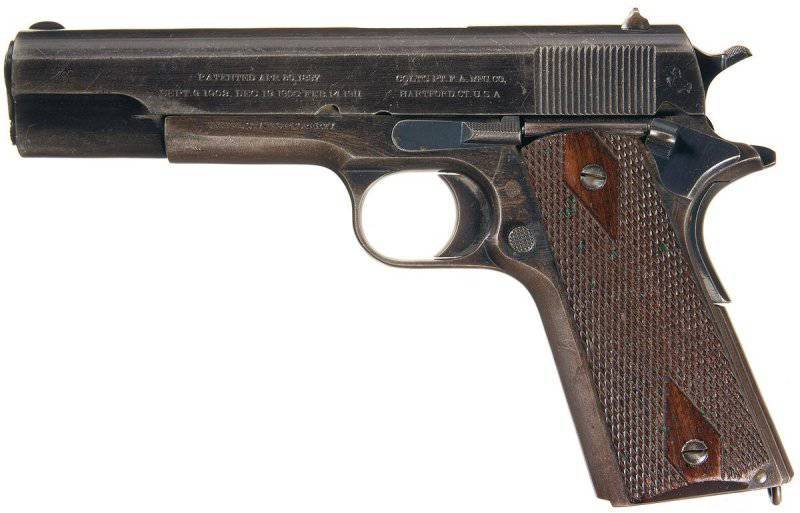
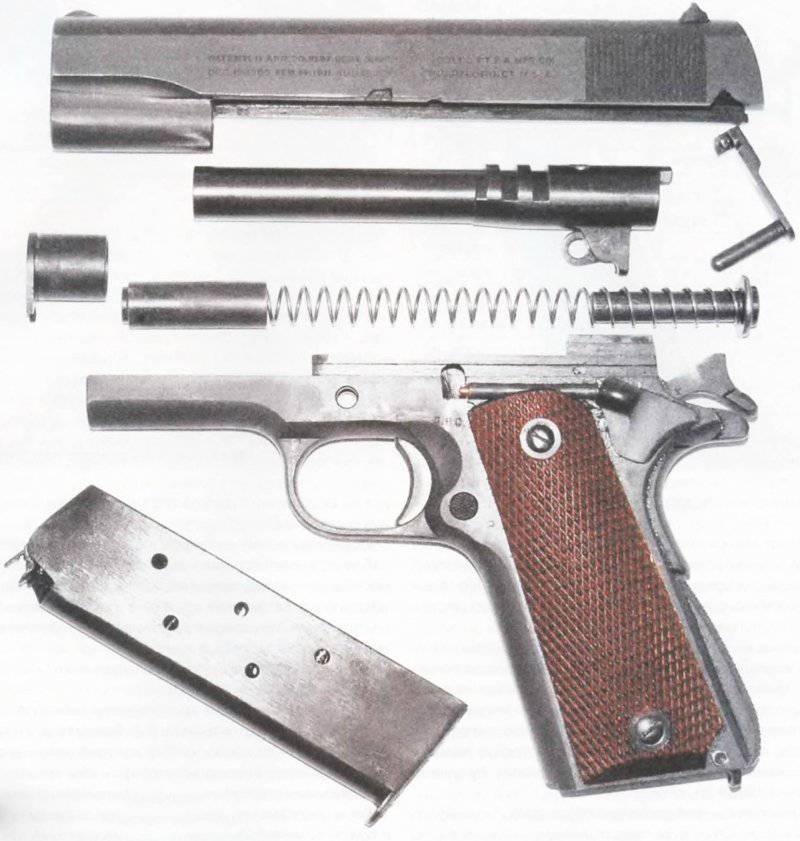
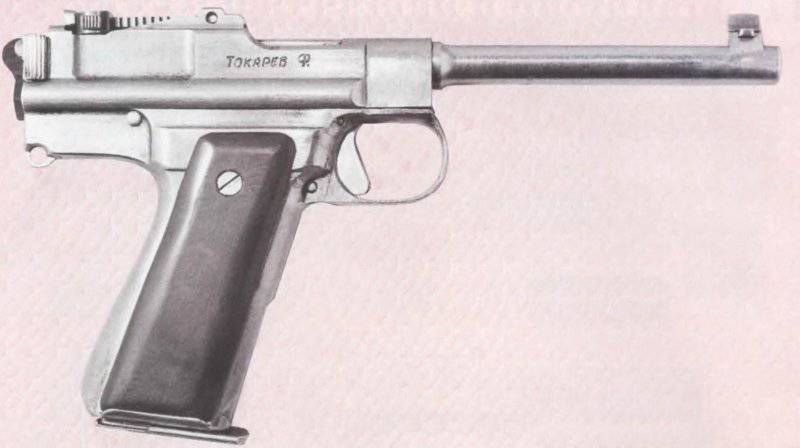

Information